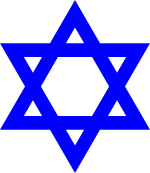This class, we had an open notes quiz on the ritual packet. The terms in question were:
- Rash Hashannah
- Yom Kippur
- Shabbatt
Next, we all read a packet describing various opinions on the Jewish afterlife. Then class read aloud the World View section of Judaism in our text book. We took notes on the Jewish perspective on the world, absolute, human condition, community, and ethics, which were collected.
Absolute - The Jewish God is beyond all other things. He is kind, just, and loving. Naturally, he deserves the utmost love and dedication from His children.
World - The world is ultimately a good and beautiful place. Being God's designated shepherds of the earth, human beings can feel free to love and enjoy the fruits of creation.
Community - The entirety of the humanity is God's children. However, it is the people of Israel that are God's chosen people. The Jews are held up to higher standards and suffer from many tests of faith.
Ethics - Among the many sects of Judaism are a variety of outlooks on life issues. Changes in divorce and homosexuality laws are accepted by some reformist Jews, while they are looked down upon by more conservative Jews.
Problem for Humans - Humans are sinful creatures. Very often they break the covenants with God or disobey His laws.
Solution for Humans - Humans must attempt to restore the withered bonds with God. They can do this by upholding His laws and covenants. In addition, they must endure the suffering of mortal life and await the coming of a Messiah.
We also watched the music video for "Candlelight", be the Maccabeats, a Jewish a capella group. Here is their website, as their songs can be helpful for understanding Jewish rituals.
http://www.maccabeats.com/ 







